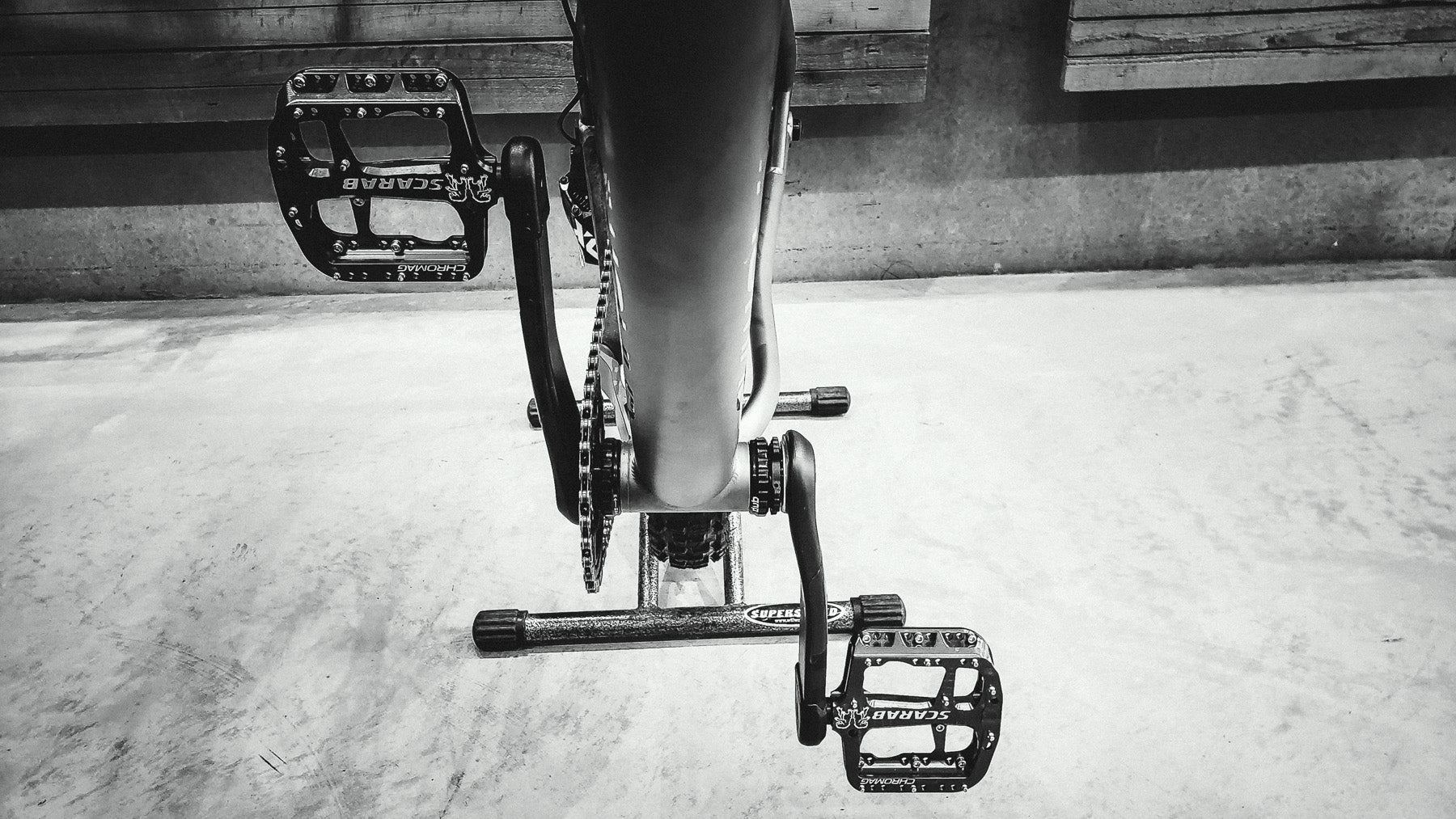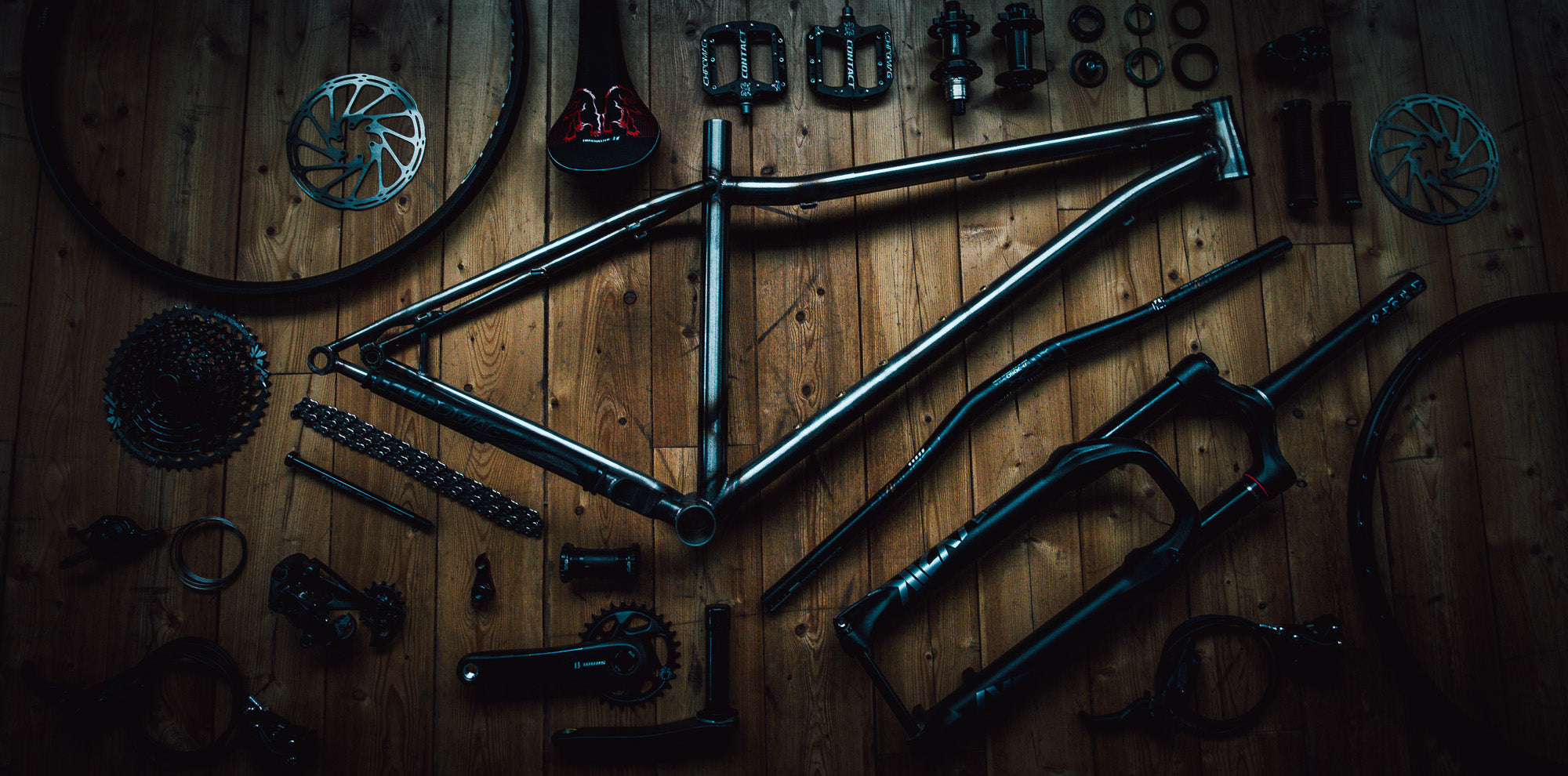If you've been browsing our pedals, you've probably noticed we bang on about Q-Factor a fair bit. But what is Q-Factor, how does it relate to mountain biking, and why does it matter? Here’s a quick explanation.
Essentially, the Q-Factor is the distance between the pedal attachment points on the crank arms, also referred to as Tread. It could also be described as the width of your crankset. This affects your bike fit—if you've ever been snowboarding, think of it as the same thing, essentially the distance between your feet.

Now, technically pedals have nothing to do with Q-Factor (imagine really wide pedals in the above diagram, the Q-Factor would remain unchanged), as this is purely a crank measurement. However, people often use the term interchangeably with pedal Q-Factor, referring to the actual stance width while riding. And in practice, all we really care about is how far apart your feet are (stance width).
So, in reality, pedals with a larger “Q-Factor” will give you a wider stance, while a narrower Q-Factor results in a more compact position.
How to Find Q-Factor?
The actual number isn’t all that important, but if you really want to find the Q-factor on your current bike, you can do the following:
-
Install your cranks so that they are both facing in the same direction.
-
You can now easily measure the distance between the outside faces of each crank (where the pedals attach).
What’s a Good Q-Factor?
A “good” Q-Factor depends on your riding style. In road riding, a narrower Q-Factor can help with aerodynamics, but it also has to suit your body ergonomics, including hip angle, hip knee alignment, and cleat positions.
Q-Factor for Mountain Bikers
For mountain biking, we don’t focus on aerodynamics as much. It’s about comfort and control. Some riders like narrow, some like wide (Ian for example, actually has a custom spacer made to widen his stance), and some can't even tell the difference. On fat bikes, you might not get much of a choice as the cranksets are intentionally much wider in order to provide clearance for the bigger tires.
How to know if you need wider pedals
If you find yourself banging your heels on your frame a lot (or if you can see a lot of frame wear on your chainstays), then it might be time to try some wider pedals. We have a demo fleet of pedals at Chromag HQ for you to try, but most good bike shops should have the same.
Here’s some feedback from one of our Chromag Team members on his thoughts about Q-Factor.
“Coming from Shimano XTR's I was interested in trying something with a larger/wider platform & have been pleasantly surprised. Despite the large flat pedal look & feel of the Pilot BA (I removed all pedal pins) I have not had any noticeable increase in pedal strikes & have really enjoyed the increased width & frame clearance with my size 12 shoes"
—Kraig Kinsman
How to Choose the Right Crankset and Pedals
If you’re uncomfortable with your current setup, then we recommend getting a bike fit done. Professional bike fitters can go into a lot of detail and make some key adjustments to make you feel (and perform) better on the bike. Some health benefits providers even cover this, so be sure to look into it if you are covered!
Now that you know what Q-Factor is on a bike, you can make a better decision about your setup. It all comes down to comfort and performance.
Check out our pedal selection to find the perfect fit for your bike and riding style!





